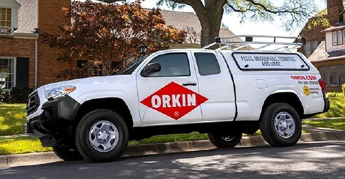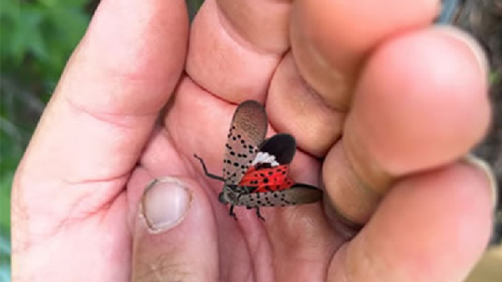
NEW YORK — On May 26, New York City Councilman Erik Bottcher, who lives in the city’s Chelsea neighborhood and sees the city’s rat problems firsthand, introduced a bill requiring that applicants for some construction permits confirm that they have employed a pest management professional for their projects.
Bottcher’s bill is not the only anti-rat efforts being pushed for at New York City Hall. As the Daily News reported, in April, NYC mayor Eric Adams announced the city was expanding a pilot program bringing sealed trash bins to the five boroughs, and in May, Councilman Chi Osse introduced a bill that would mandate annual reports on rat mitigation from the city’s Department of Health and Mental Hygiene.
An uptick in construction and COVID-era dining are helping NYC’s rodents thrive.
© N.Francis | iStock
PCT reached out to several New York City pest management professionals for their rat observations during the past two years. PCOs said the “city being overrun by rats” narrative should be tempered, noting that increased rodent sighting by the public are related to an uptick in construction projects and COVID trends, including people spending more time in their homes, gardens and parks, thus noticing rodents more.
COVID-19 stopped existing construction projects and pushed back start dates of others. As the city came out of strict COVID restrictions, construction picked up again, including in areas like Chelsea.
Timothy Wong, owner of M&M Environmental Services, Long Island City, N.Y., said, “When they’re doing construction, nine out of 10 times there will always be rats on the construction site because you’re lifting the dirt and you’re disrupting their homes.”
In this example, it’s most likely that citizens are not witnessing a new rat population, rather they are now just seeing an existing rat population.
New York City already does address rats on construction sites with a regulation requiring that prior to demolition, buildings must be inspected and baited by a licensed rodent pest management professional.
While pest professionals say demolition regulation has some impact on rodent populations at demo sites — and they appreciate the business opportunity — it is hindered by a lack of oversight and builders awarding contracts to pest control firms that provide the lowest bid. “What the city needs to do is stop [awarding] the lowest bidders on city properties,” said Joseph Sheehan, CEO, Colony Pest Management, Brooklyn, N.Y.
Moreover, rodent abatement on the demo site is only part of the problem. What really is needed, they said, is a regulation requiring builders to contract with a pest management professional for a rodent abatement program throughout the entirety of a construction project.
While COVID-era construction is one factor cited in increased rodent sightings, there are others, including recent dining trends. New York City restaurateurs pivoted during the pandemic, creating make-shift outdoor dining areas.
Gil Bloom, president of Standard Pest Management, Queens, N.Y., said outside dining is “one of the best things that could have happened for rodents in New York City.” One example Bloom provided was restaurants adding aesthetically pleasing dirt-walled traffic barriers (e.g., planters). “Rodents are burrowing in the very walls of these outside [structures],” he said.
Also, these outdoor dining areas are constructed with plywood as platforms. “One, they are hard to clean and two they provide shelter underneath for rodents,” said Wong.
PMPs contacted by PCT said Bottcher’s proposed bill will have a limited impact if it does not go beyond mandating the installation of exterior bait stations on demolition sites.
“The onus of responsibility to manage or otherwise control rodents cannot be the sole responsibility of the PMP, and this bill, as it’s written (or at least interpreted by me), may inadvertently imply that,” said Timothy Best, technical manager, Terminix, Manhattan, N.Y. “We all know that rodent management takes a collective effort, so the contractor(s) should be aware of their roles and responsibilities as well; for example, maintaining sanitation on the jobsite (among other tasks). If I was in a position to inform the councilman about this proposed bill, I would perhaps recommend to at least include some additional language via subclause(s) that speaks to known best practices for rodent pest management, and better, more clearly defines roles and responsibilities by party.” — Brad Harbison
Industry to Make August Pesticide Preemption Push
FAIRFAX, Va. — The National Pest Management Association’s (NPMA) public policy team is asking its members to visit with their congressional representatives when they are home throughout August. This call-to-action is to make a final push for congressional support of H.R. 7266, which would codify federal pesticide preemption (as part of the 2023 Farm Bill) as the national standard, ensuring that the Environmental Protection Agency (EPA) and the state lead agency jointly regulate pesticide usage. NPMA said preemption would preclude localities from regulating pesticides, instead ensuring that agencies with scientific expertise are able to evaluate whether a product is safe and effective, promoting a science-based policy.

NPMA is encouraging members to visit their congressional reps prior to the Farm Bill vote.
© Dwight Nadig | iStock
Ashley Amidon, vice president of public policy, NPMA, told PCT that August visits can be effective because congressional members are looking to “take the temperature” of constituents, especially with the upcoming mid-term elections. “And from our members’ perspective,” she said, “we’ve got so many folks that are so excited about H.R. 7266, and so ready to see preemption fixed in the 2023 Farm Bill, that I think all the stars just aligned for us to try it.”
NPMA was close to having preemption included in the 2018 Farm Bill, and since then, members have continued to educate their congressional representatives (e.g., Legislative Day visits). Also since that time, NPMA has been working with golf course, landscape and mosquito industry associations as well as the Agricultural Retailers Association to hold joint congressional visits and create one-pagers. In May, NPMA spearheaded a letter-writing campaign in support of H.R. 7266 that included 159 individual associations as signatories.
“I’m optimistic in the sense that I think we’ve got a lot of the pieces in place, even more than we did last time, to really push this in a united way even beyond our industry,” Amidon said. — Brad Harbison
NPMA Announces Results of Board of Directors Election

Justin McCauley
FAIRFAX, Va. — The National Pest Management Association (NPMA) announced results of the election for its 2022-23 board of directors. Each of the newly elected directors began their term July 1.
New board members include: President Justin McCauley (McCauley Services); President-Elect Marillian Missiti (Buono Pest Control); Treasurer Faye Golden (Cook’s Pest Control); Secretary Emily Thomas Kendrick (Arrow Exterminators); Immediate Past President Scott Steckel (Plunkett’s Pest Control); Past President Representative J. Bryan Cooksey (McCall Services); Region No. 1 Director David Flynn (Burgess Pest Management); Region No. 4 Director Dan Rottler (Rottler Pest & Lawn Solutions); At-Large Director Joe Campbell (ABC Home & Commercial Services of DFW); At-Large Director Dauphin Ewart (The Bug Master); At-Large Director Audrey Hall (Eco Serve Pest Services); At-Large Director Jeffrey King (The Pest Rangers); and At-Large Director Erin Richardson (All-American Pest Control).
In addition to elected directors, the current board has appointed the following new members to serve on the 2022-23 board of directors: Associate Director David Fisher (Rentokil North America); Associate Director Emilio Polce (EcoChoice Termite & Pest Control); Allied Director Steven Gullickson (MGK); Allied Director Andrea Hancock (Mattress Safe); and UPFDA Representative Patrick Lynch (Bell Labs).
These individuals join the current NPMA board members who will remain on the board to round out the association’s leadership. “NPMA is delighted to welcome our newly elected board and executive committee,” said NPMA Chief Executive Officer Dominique Stumpf. “We are fortunate to have excellent leaders who will work together to encourage high levels of competence, knowledge and performance in the industry.”
Scott Mullaney and Ratting Dogs to be Featured in Pair of Documentaries
WOODBRIDGE, Va. — The general public can’t seem to get enough of rodents. Los Angeles-based Day’s Edge Productions (working on a documentary for PBS), as well as a production company making a documentary for the Canadian Broadcast Corporation (CBC), are both working on film projects about these pests.
Unique Pest Management, Woodbridge, Va., and its ratting dogs were recently filmed for both documentaries. Scott Mullaney, director of animal services/principal at Unique Pest Management, took both crews on a jobsite in the Adams Morgan neighborhood in Washington, D.C.
“We shot them both in the same alleyway because it was wide and gave their crews room to set up, and also because the architecture at one end of the alley is completely different from the other end,” said Mullaney.

Rats caught by the Unique Pest Management team while filming recent documentaries.
He added that this area is a hot spot for rats because there are a lot of mixed-use commercial buildings (e.g., restaurants and apartments).
During the shoot for the CBC documentary, Mullaney’s ratting dogs caught 41 rats, while during the Day’s Edge shoot they only caught 14 — a result of having to work in a downpour, Mullaney said.
The documentaries don’t just show sensational footage, but rather they mix in footage with discussions about rat biology and behavior, Mullaney said.
For example, Mullaney recalled being able to explain and show rodent behavior during and following rainfall at the Day’s Edge shoot.
“We caught three young males during the pouring rain and I explained [to the TV crew] that if we got a break in the rain, that we’re going to see adults come out,” he said. “And that’s exactly what happened; after the rain, the remaining 11 we caught were huge, adult males.”
Mullaney said he is excited to see the final product and optimistic they will show the pest control industry in a positive light. “We were very happy with the connections we had with [the production companies]. They showed an understanding of our love for the dogs, our use of the dogs, as well as our love of rats and our not wanting to have rats around. And they showed an understanding of the business aspect of it as well.”
Mullaney said both production companies are hoping for December release dates for the documentaries.
Rhode Island Passes Bill Restricting Use of Neonics
PROVIDENCE, R.I. — On June 22, the Rhode Island legislature passed S.B. 2299/H.B. 7129, which would restrict the use of pesticides containing neonicotinoids outdoors, allowing only certified applicators to purchase or use them. The bill has been sent to Rhode Island Gov. Daniel McKee (D), who will determine whether to sign it into law.
Leonard Brown, director of public policy, National Pest Management Association, said NPMA and its members were able to get both House and Senate bills “deferred from a vote in the committee process,” but a late push by activist groups made Rhode Island legislative committee members reconsider.

Rhode Island State House
Kumar Appaiah – Flickr: Rhode Island State House, CC BY-SA 2.0
Brown said NPMA is currently working with a coalition of agriculture and non- agriculture organizations to ask McKee to veto the bill. NPMA is running an active VoterVoice campaign for members that live in Rhode Island to encourage the Governor to veto the bill.
In Rhode Island, restricted use products (RUPs) require direct line-of-sight supervision of licensed applicators, which will be the challenge for Rhode Island pest management professionals, according to Griggs & Browne Pest Control’s Ted Brayton, who is the New England SPARR (State Policy Affairs Representative) for NPMA. “I don’t know of any other states in the country like that, certainly not in New England,” Brayton told PCT. Brayton said Rhode Island’s stringent RUP requirement was, understandably, created to ensure the safe, professional use of more volatile products (e.g., fumigants, subsurface liquid termiticide applications, rodent tracking powders, etc.) — not neonicotinoids. “That is really the sticking point,” he said.
The Rhode Island bill does include an exception for the use application neonicotinoids indoors by licensed professionals. However, as the bill is written that exception only applies if the product does not have an exterior application on the label and Brayton said to his knowledge there is only one neonicotinoid product that does not have exterior application language on the label. — Brad Harbison
Rollins Makes BMW Group’s Top 50 Green Fleets List

For the second year in a row, Rollins has been recognized for its green vehicle fleet.
ATLANTA — Rollins has been recognized by BMW Group, ranking its fleet at No. 15 in the top-50 green fleets. Rollins utilizes 1,285 flex fuel vehicles, 435 hybrid electric vehicles, five electric vehicles and one CNG-powered vehicle, allowing the company to reduce overall carbon emissions and its impact on climate change.
Jerry Gahlhoff, president and COO of Rollins, said the company is “focused on being a good corporate citizen, and that means caring for our environment. Our drive to enhance the efficiency of our fleet extends beyond our vehicle choices to include optimizing our routes to reduce technician drive time, fuel consumption and overall carbon emissions from our fleet.”
This year, Rollins ranked two spots higher in the Automotive Fleet Top 50 Green Fleet list compared to last year’s ranking.
Spotted Lanternfly Confirmed in North Carolina
KERNERSVILLE, N.C. — On June 29, the North Carolina Department of Agriculture and Consumer Service (NCDA&CS) announced the spotted lanternfly had infested an area in Kernersville, a suburb of Winston- Salem. Initial surveys indicate the infestation covers a 5-mile-radius area, indicating it likely had been there for a couple of years before it was reported.
The NCDA&CS continue to survey to determine the extent of the infestation and are already starting treatments to reduce populations.
First detected in the U.S. in Pennsylvania in 2014, the pest has since been detected in nine additional states. In late 2021, an infestation popped up very near to the North Carolina-Virginia state line, prompting concern that its invasion into North Carolina was imminent.

The spotted lantern fly has been detected in 10 states.
